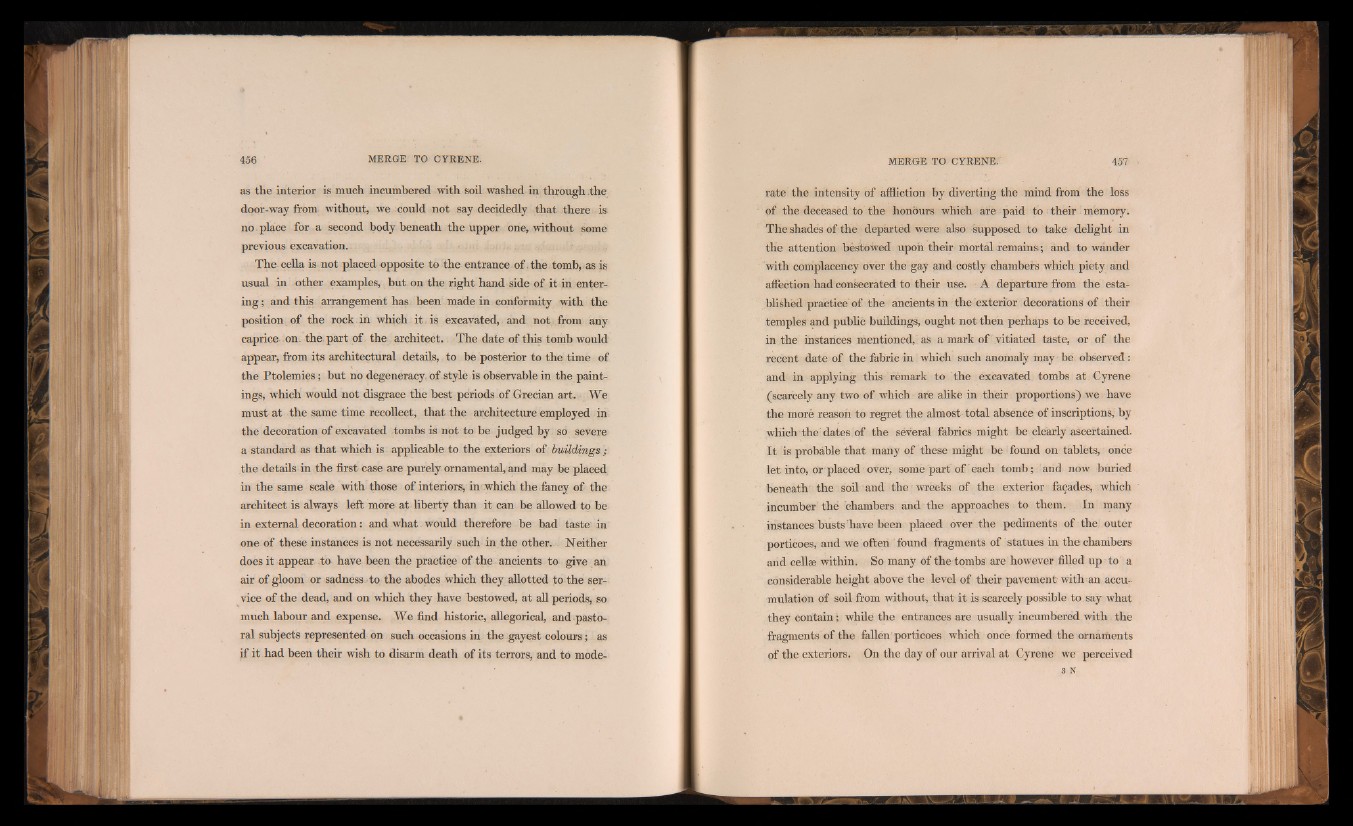
as the interior is much incumbered with soil washed in through .the
door-way from without, we could not say decidedly that there is.
no place for a second body beneath the upper one, without some
previous excavation.
The celia is not placed opposite to the entrance of . the tomb,.as is
usual in other examples, but on the right hand side of it in entering;
and this arrangement has been made in conformity with the
position of the rock , in which it . is excavated, and not from any
caprice on. the part of the architect.. The date.of this tomb would
appear, from its architectural details, to be posterior to the time of
the Ptolemies; but no degeneracy, of style is observable in the paintings,
which would not disgrace the best periods .of Grecian art. We
must at the same time recollect, that- the architecture employed in
the decoration of excavated tombs is not to be judged by so severe
a standard as that which is applicable to the exteriors of buildings ;
the details in the first case are purely ornamental, and may be placed
in the same scale with those of interiors, in which the , fancy of the
architect is always left more at liberty than it can be allowed to be
in external decoration: and what would therefore be bad taste in
one of these instances is not necessarily such in the other. Neither
does it appear, to have been the practice of the ancients to give an
air of gloom or sadness, to the abodes which they allotted to the service
of the dead, and on which they have bestowed, at all periods, so
much labour and expense. We find historic, allegorical, and pastoral
subjects represented on such occasions in the gayest colours; as
if it had been their wish to disarm death of its terrors, and to moderate
the intensity of affliction by diverting the mind from the loss
of the deceased to the honours which are paid to : their memory.
The shadés of the departed were also supposed to take delight in
the attention bèstowed upon their mortal remains.; and to wander
with complacency over the gay and costly chambers which piety , and
affection had consecrated to their use. A departure from the established
practice of the ancients in the exterior decorations of their
temples and public buildings, ought not then perhaps to be received,
in the instances mentioned, as a mark of vitiated taste, or of the
recent date of the fabric in which such anomaly may be. observed :
and in applying this remark to the excavated tombs a t . Cyrene
(scarcely any two of which are alike in their proportions) we have
the moré reason to regret the almost total absence of inscriptions, by
which the dates of the several fábrics might be clearly ascertained.
I t is probable that many of these might be found on tablets, once
let into, or placed over, some part of each tomb; and now buried
beneath the soil and the wrecks of the exterior façades,, which
incumber thé chambers and the approaches to them. In many
instances busts have been placed over the pediments of the, outer
porticoes, and we often found fragments of statues in the chambers
and cellæ within. So many of the tombs are however filled up to a
considerable height abové the level of their pavement with an accumulation
of soil from without, that it is scarcely possible to say what
they contain ; whilè the entrances are usually incumbered with the
fragments of the fallén porticoes which once formed the ornaments
of the exteriors. On the day of our arrival at Cyrene we perceived